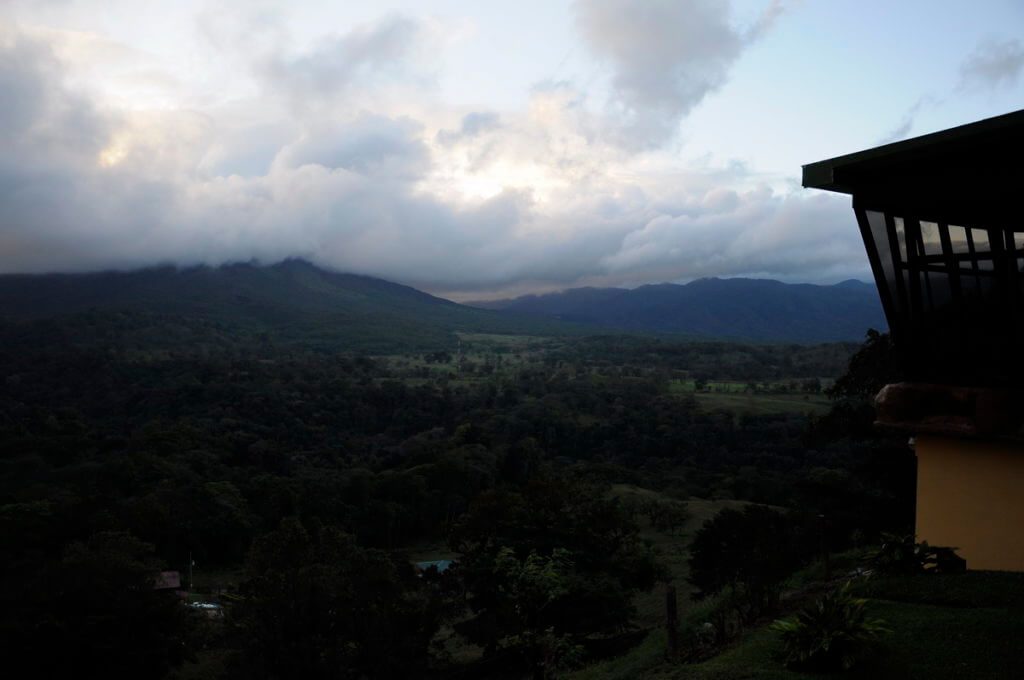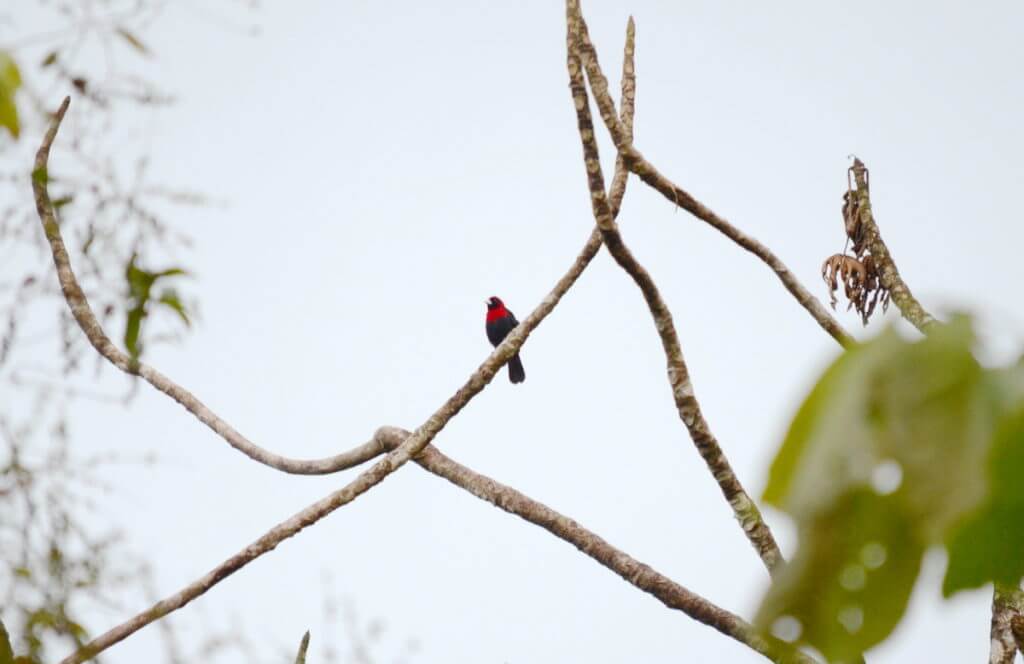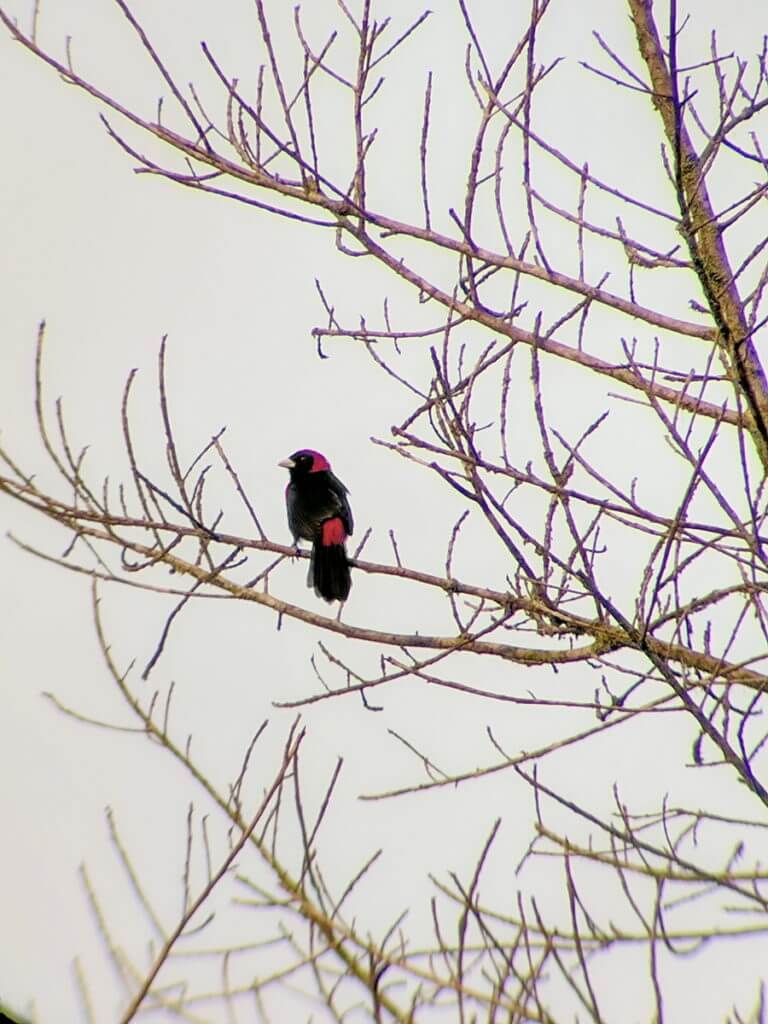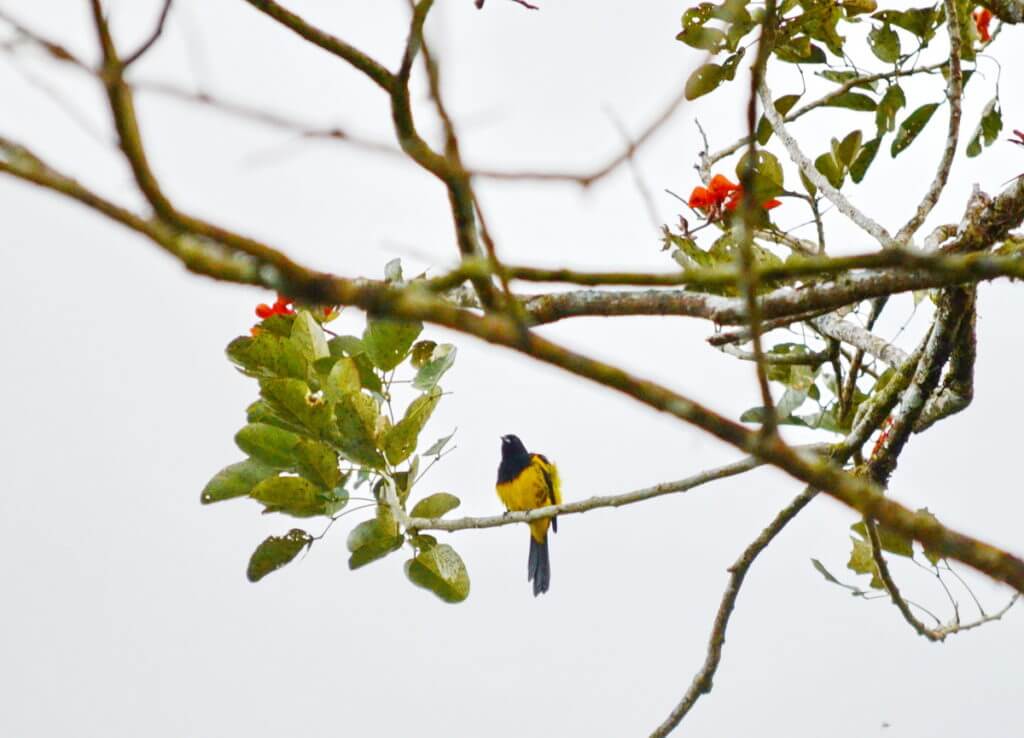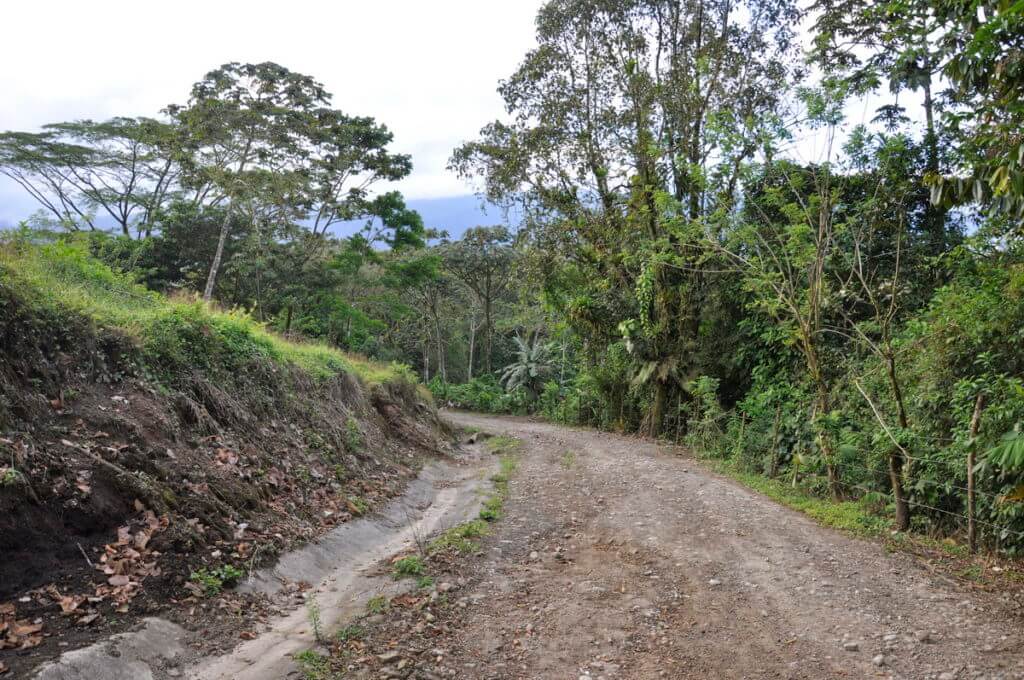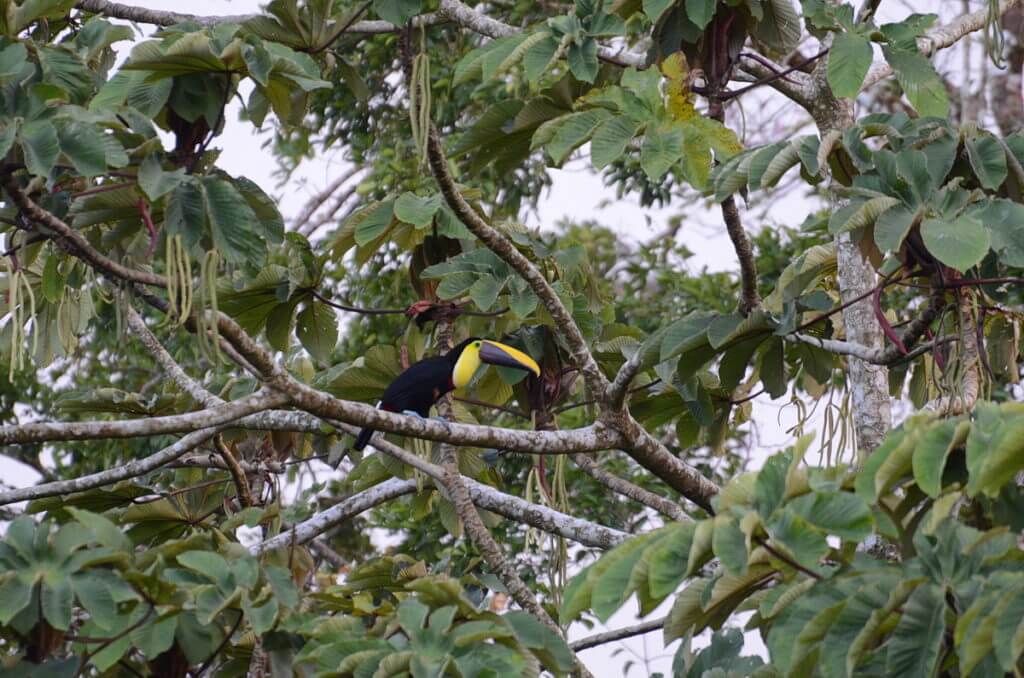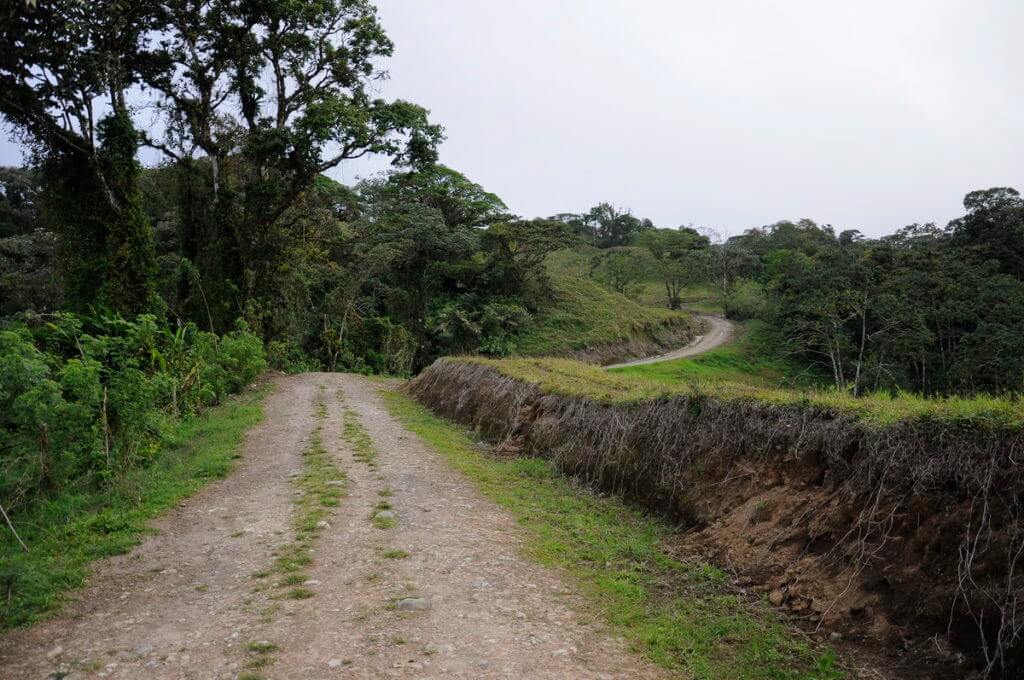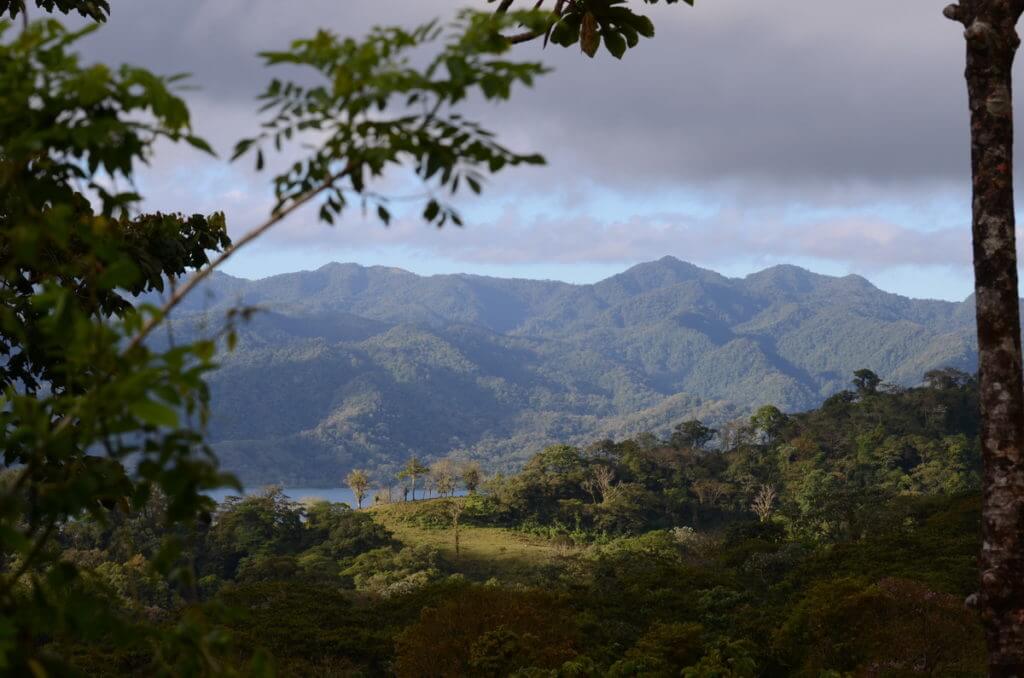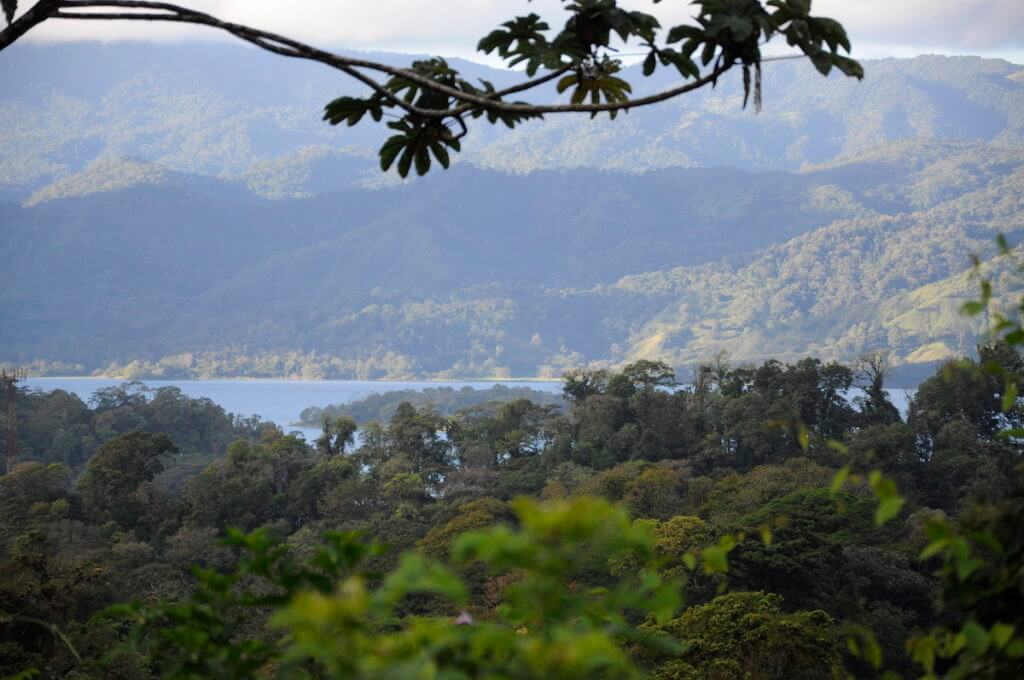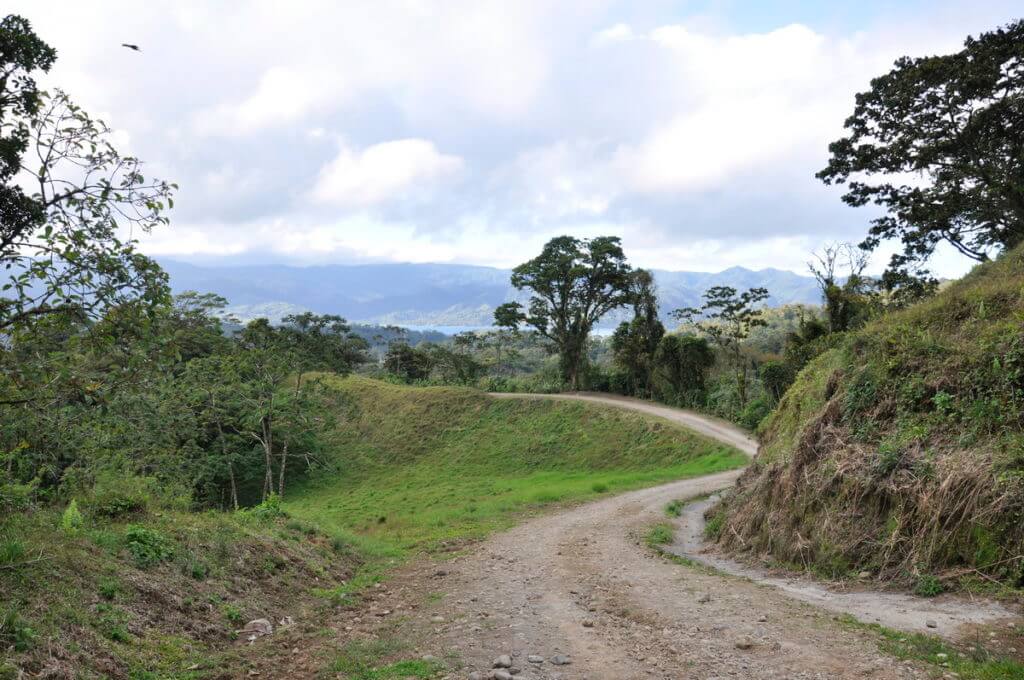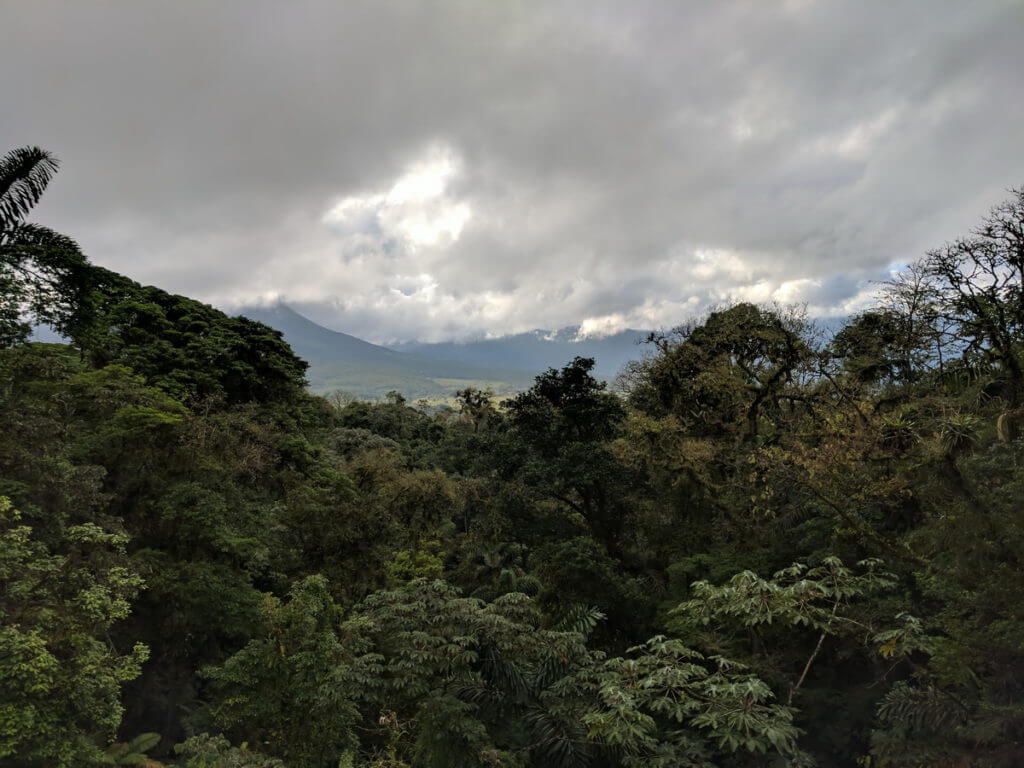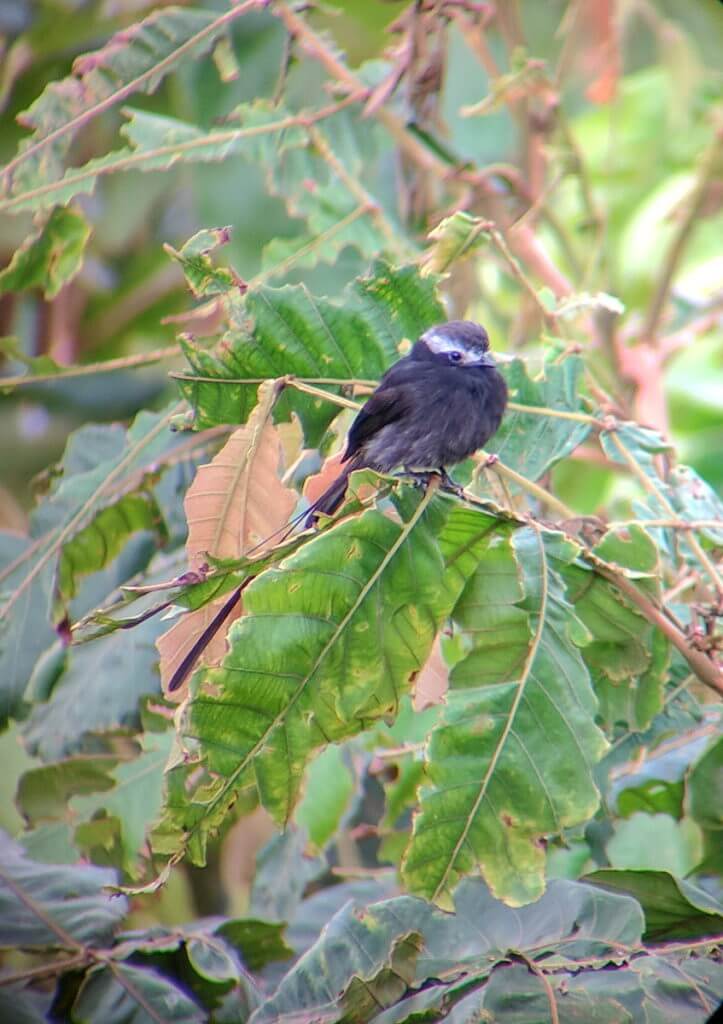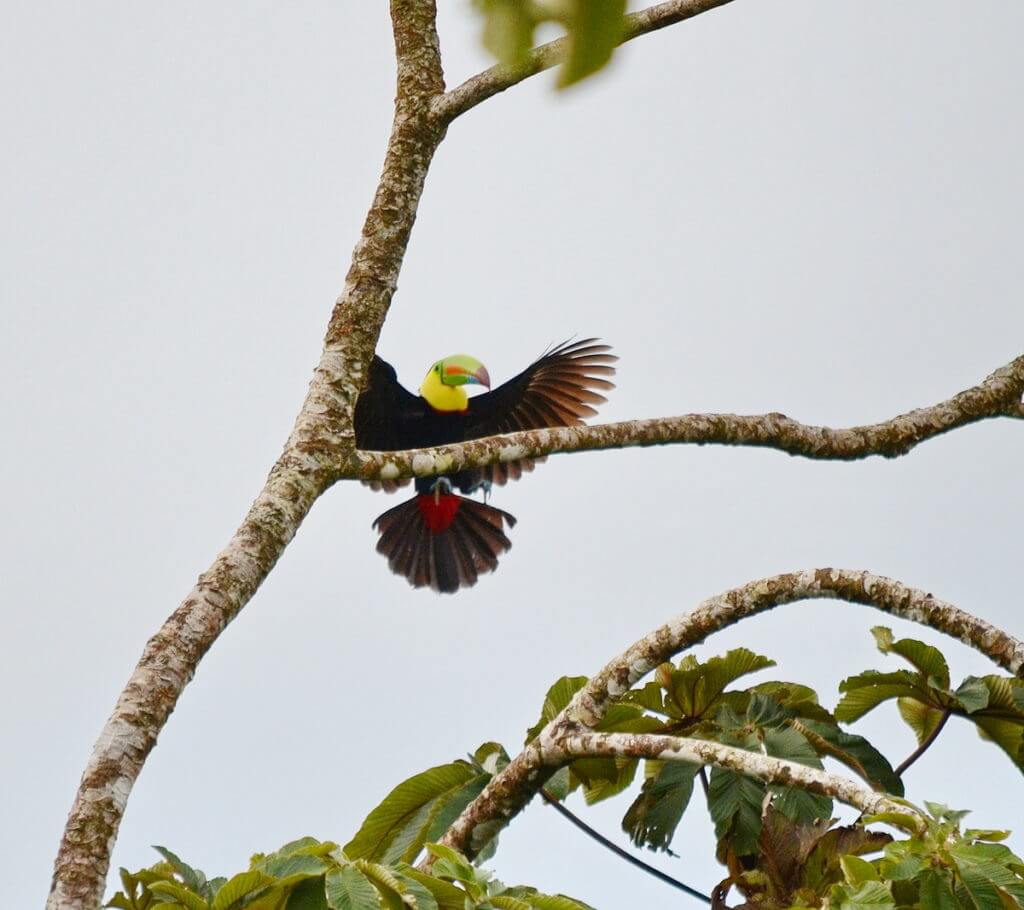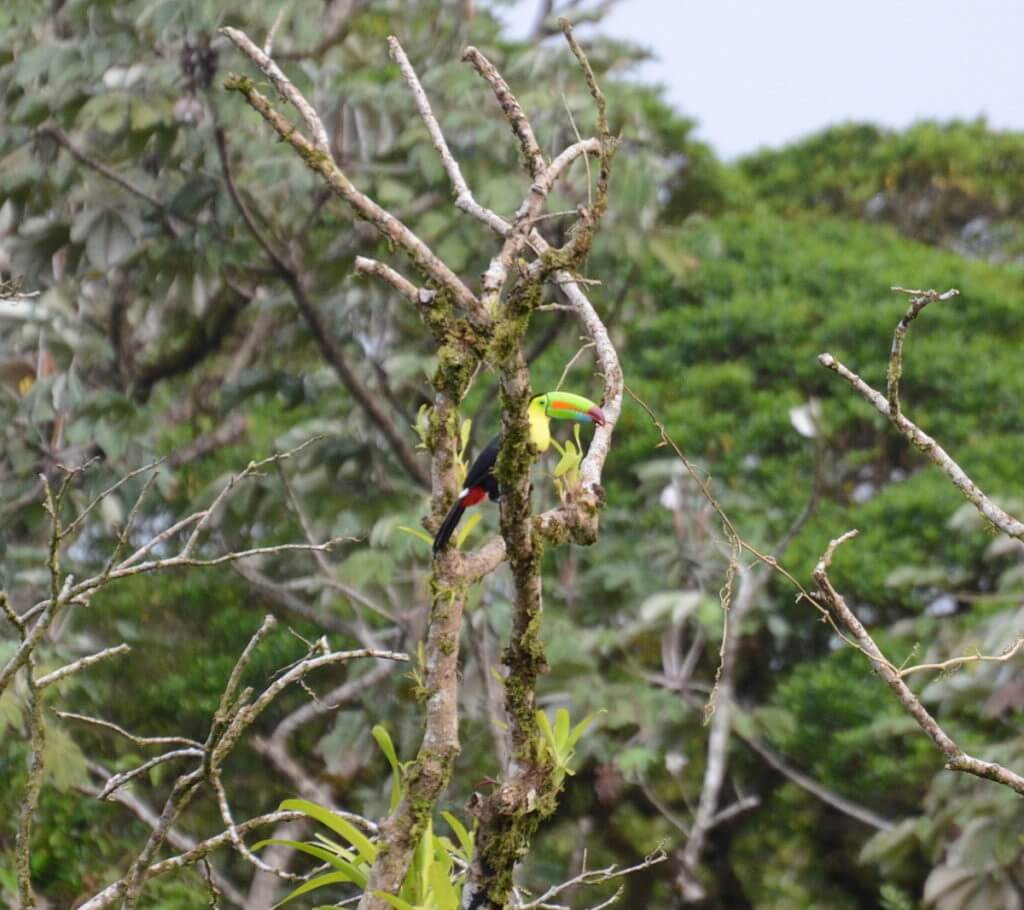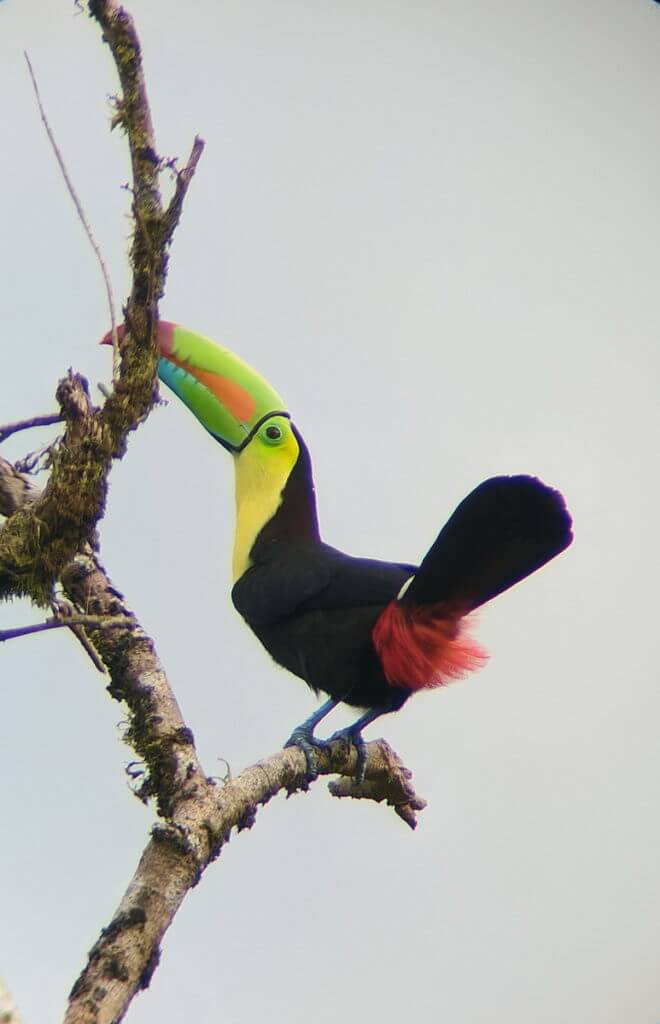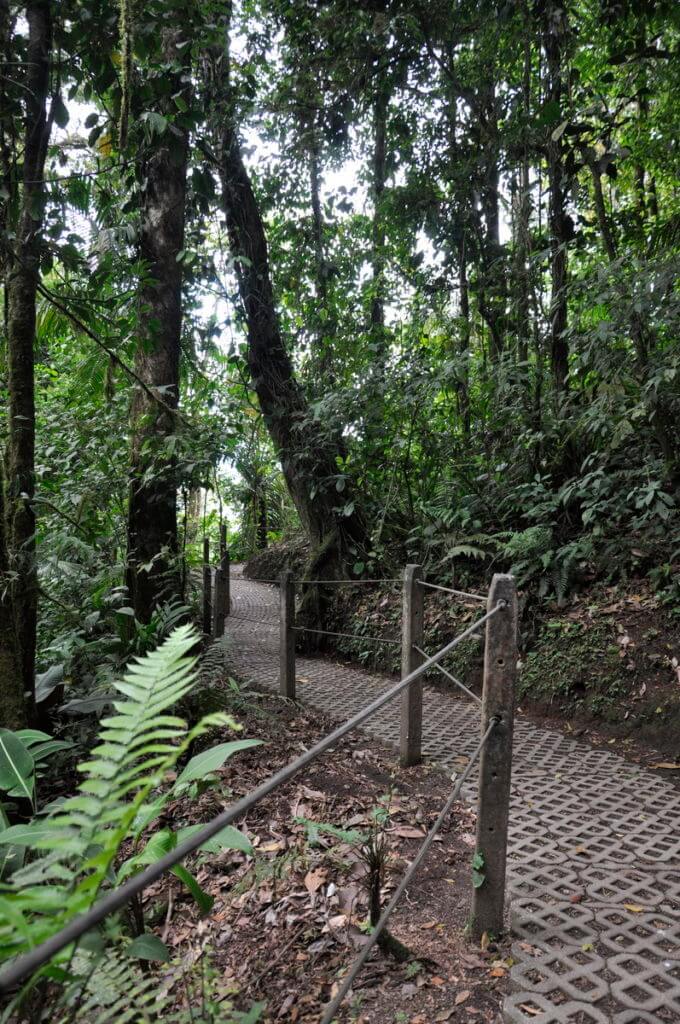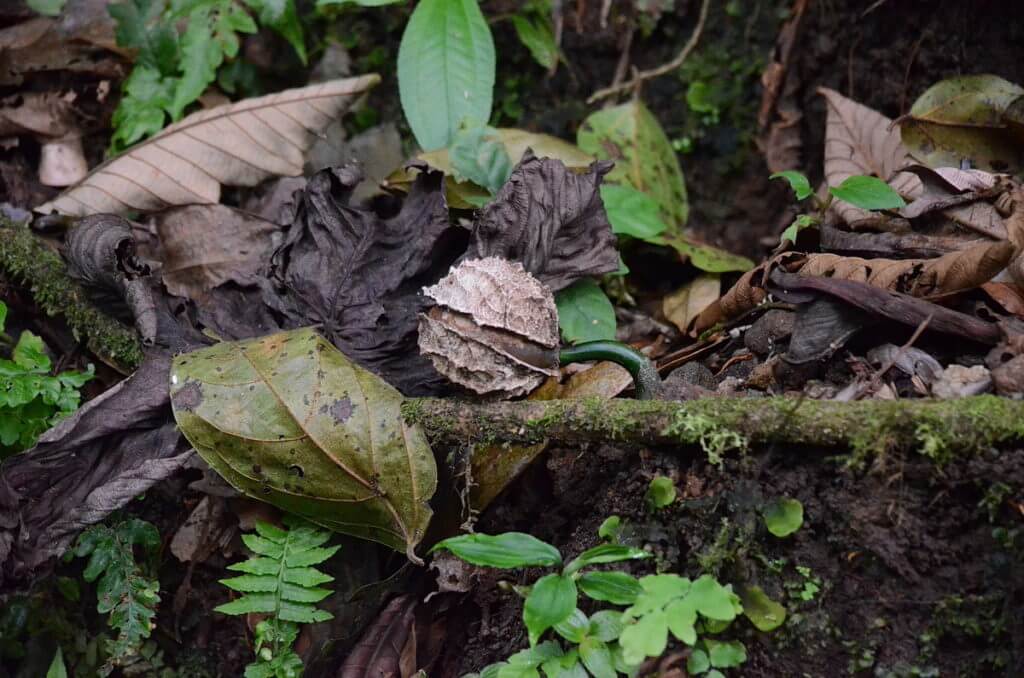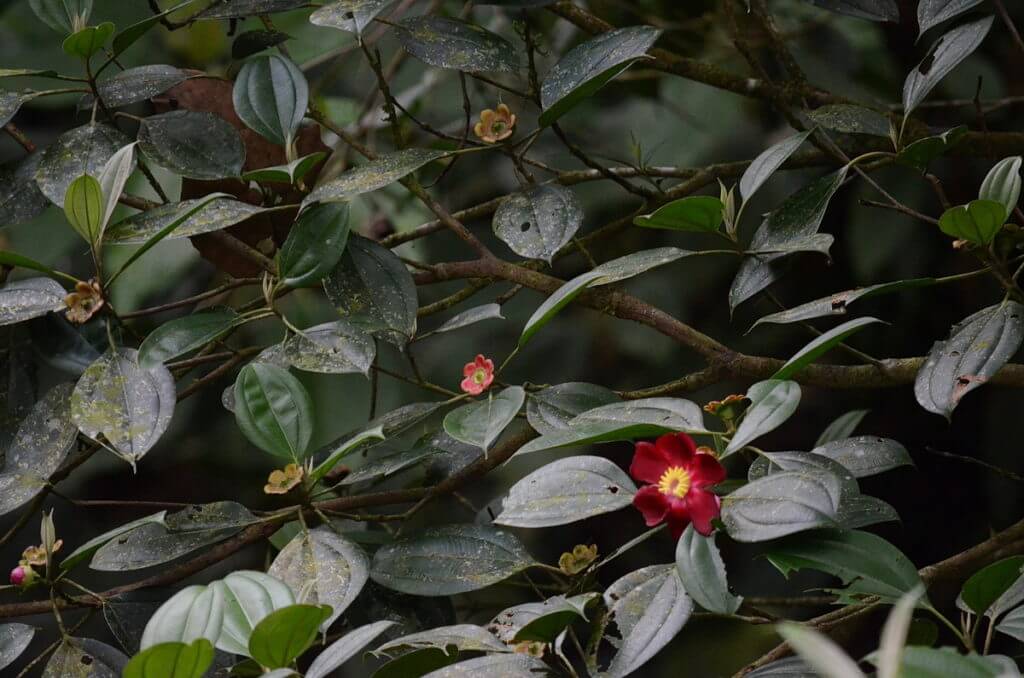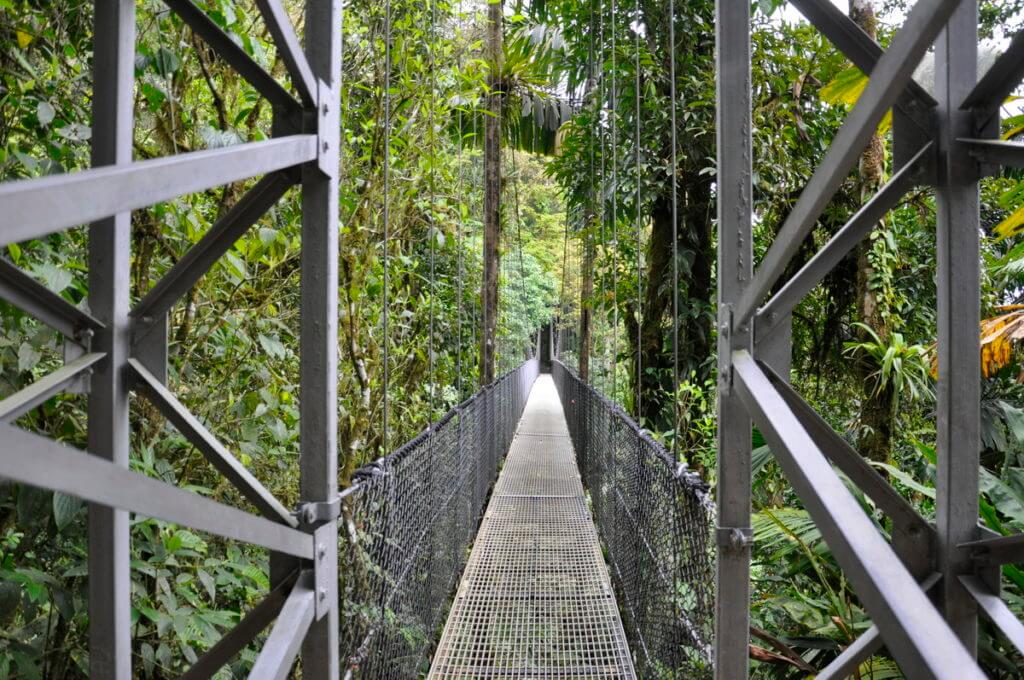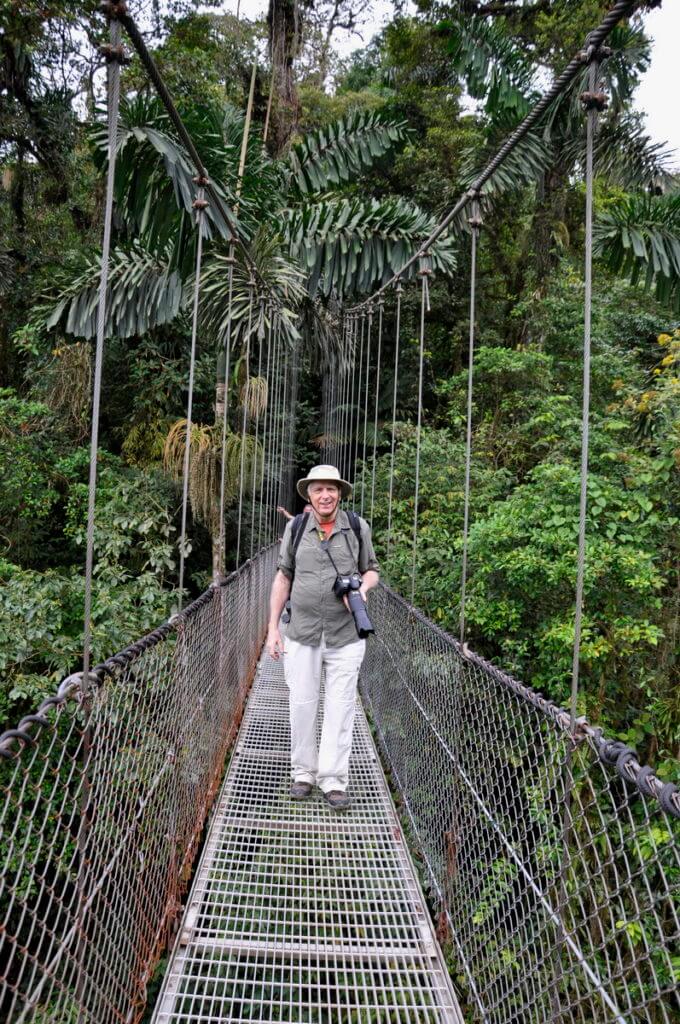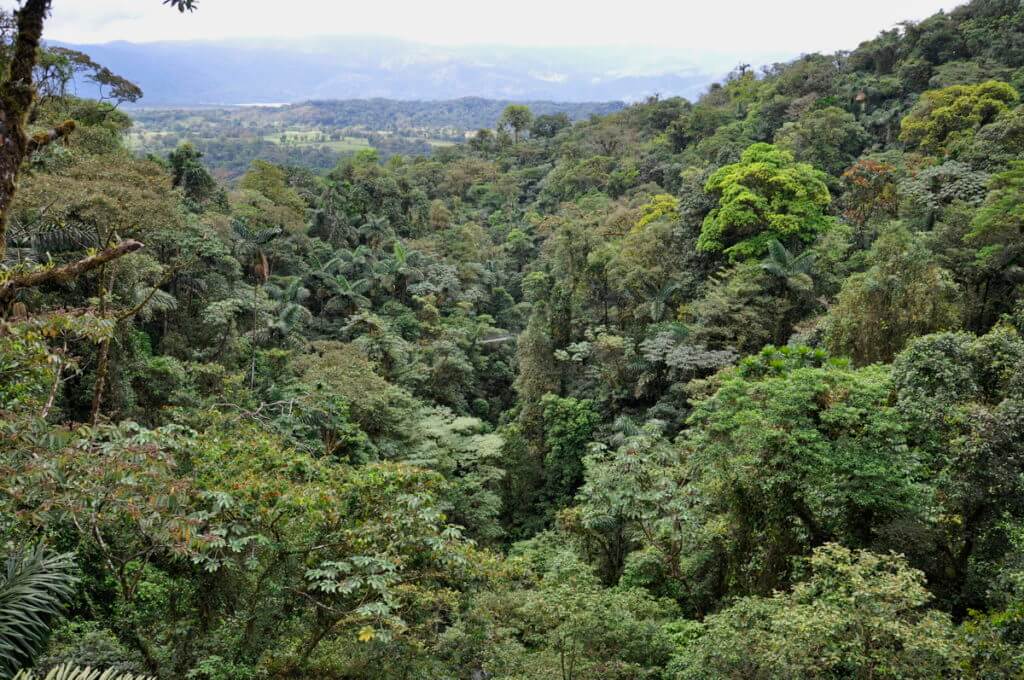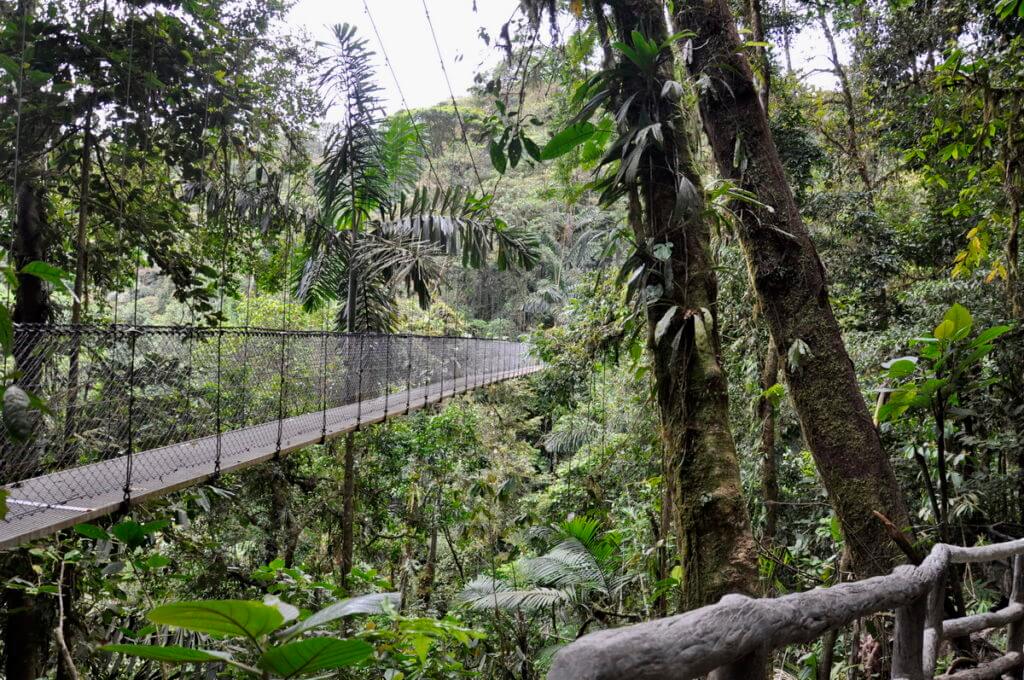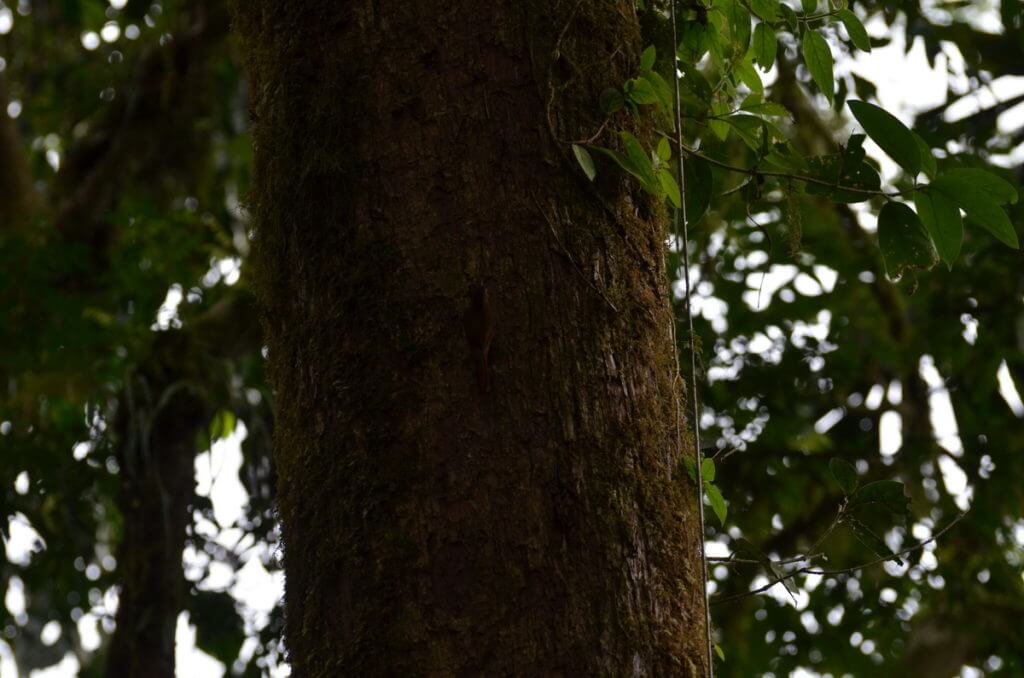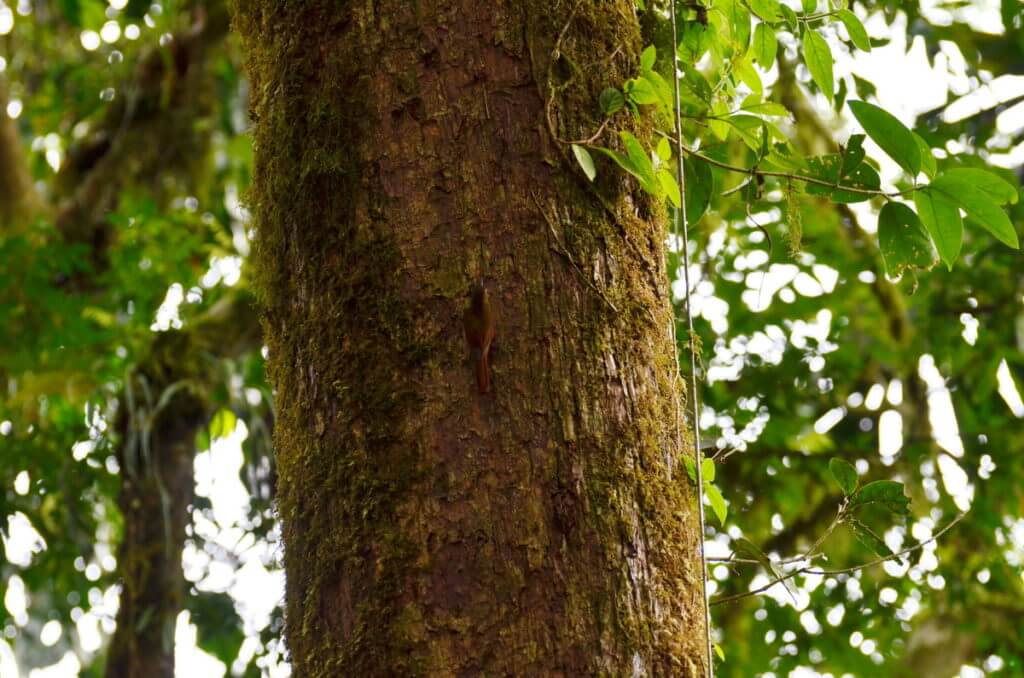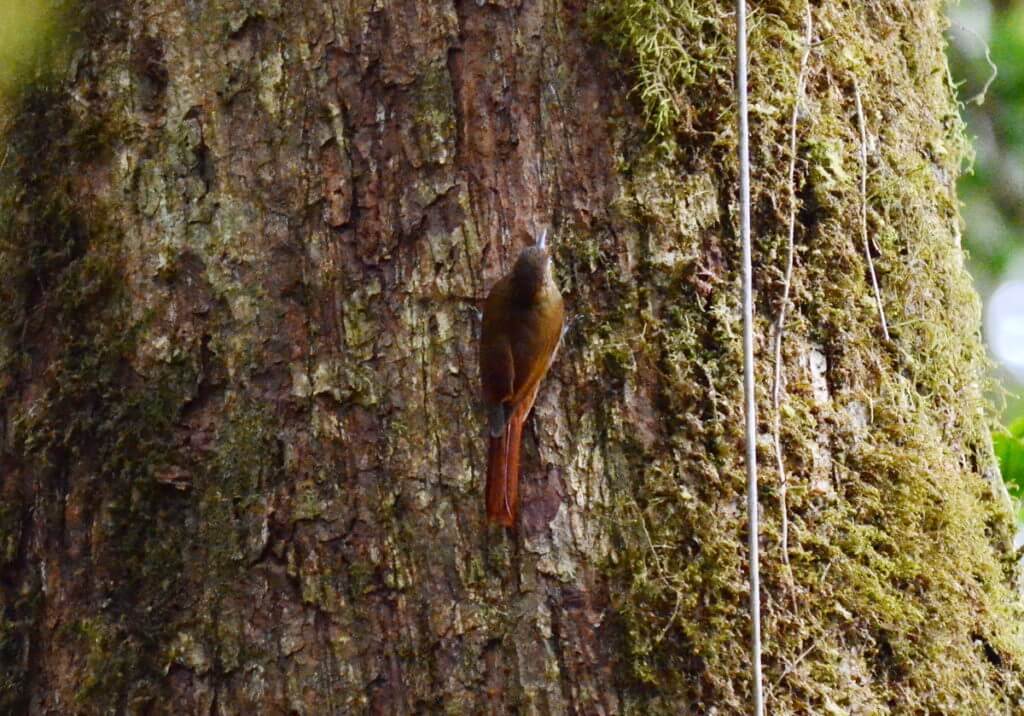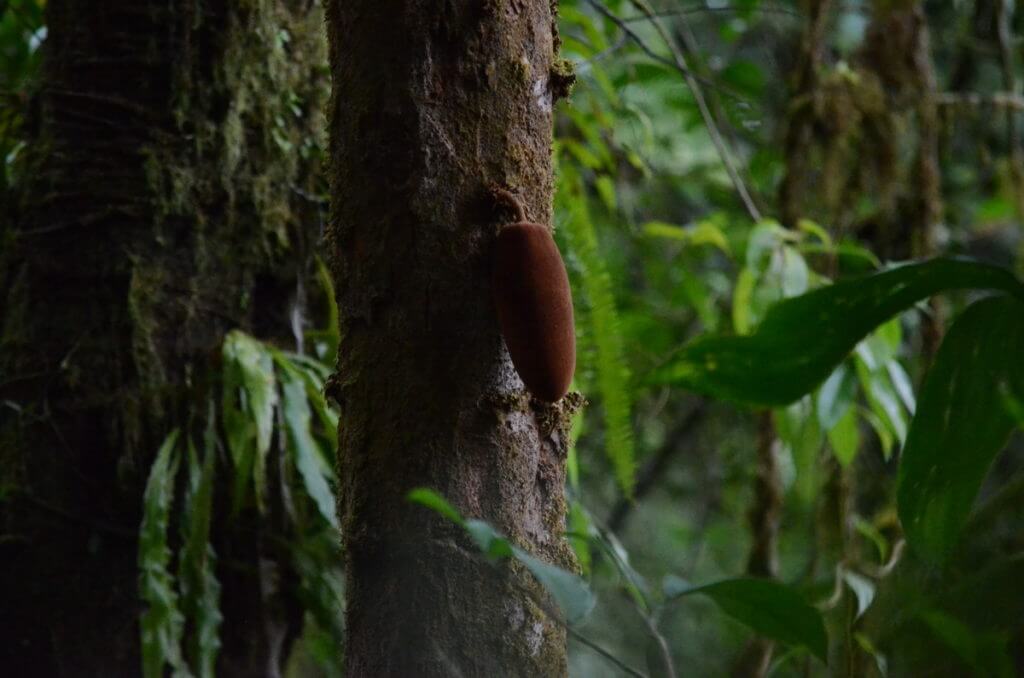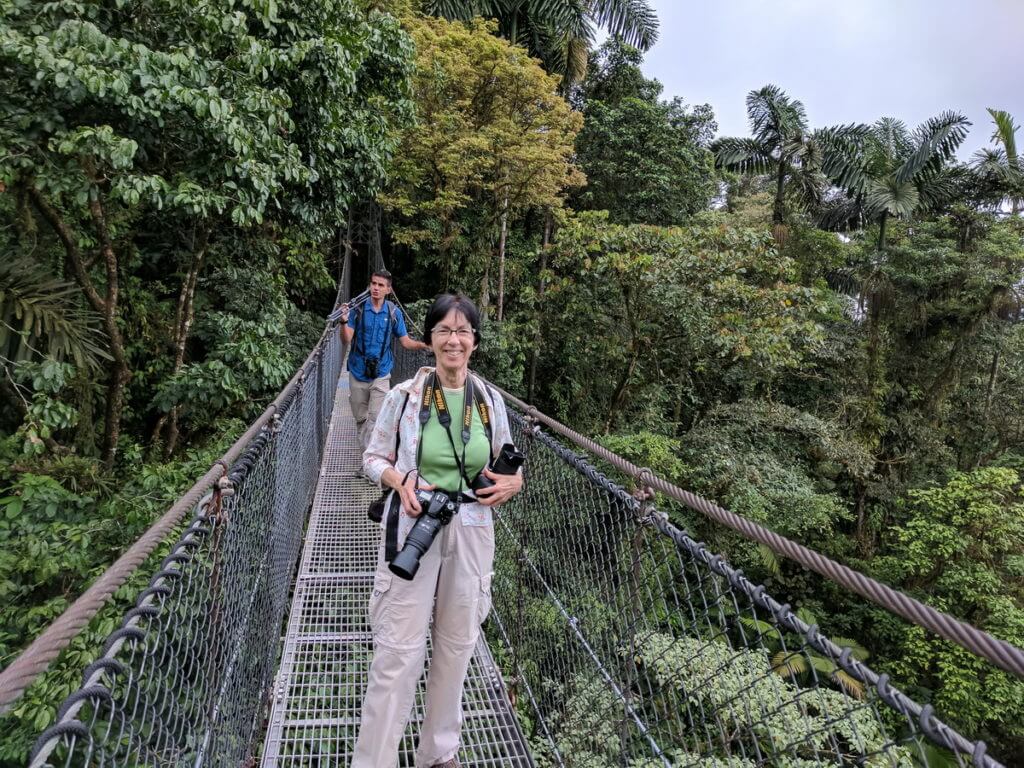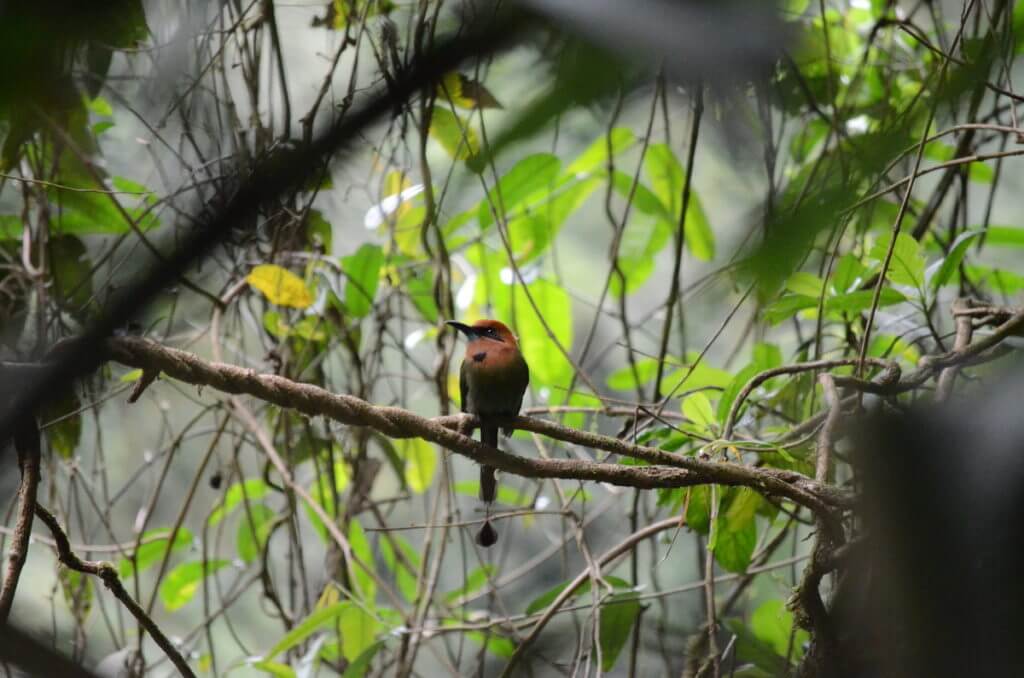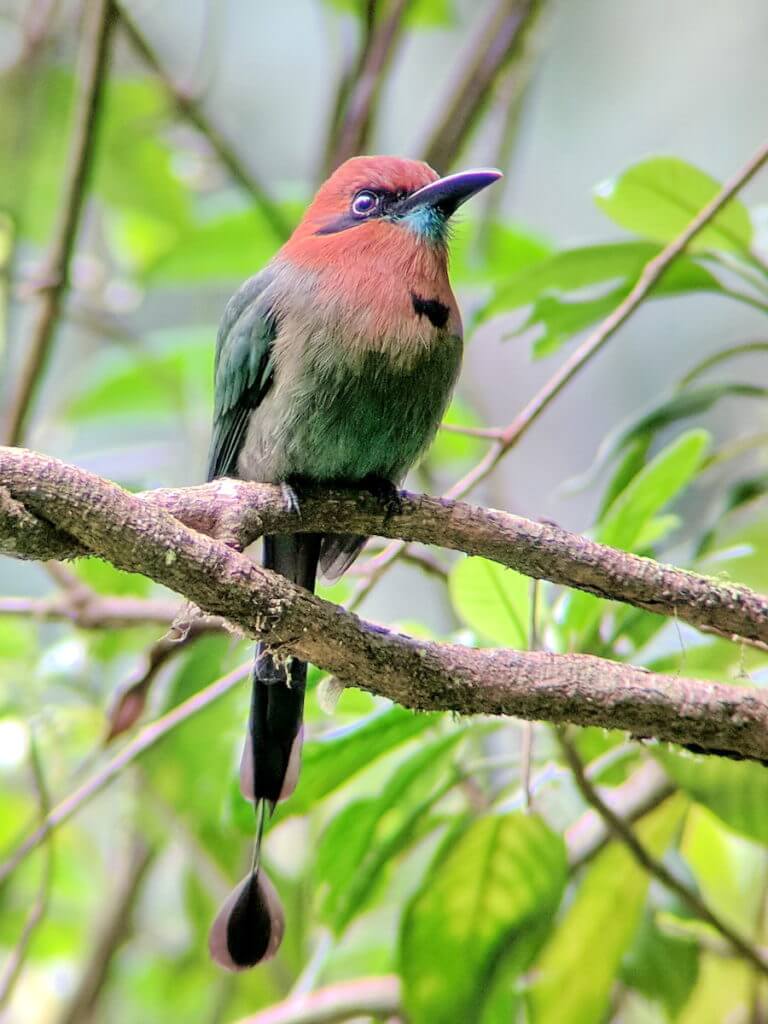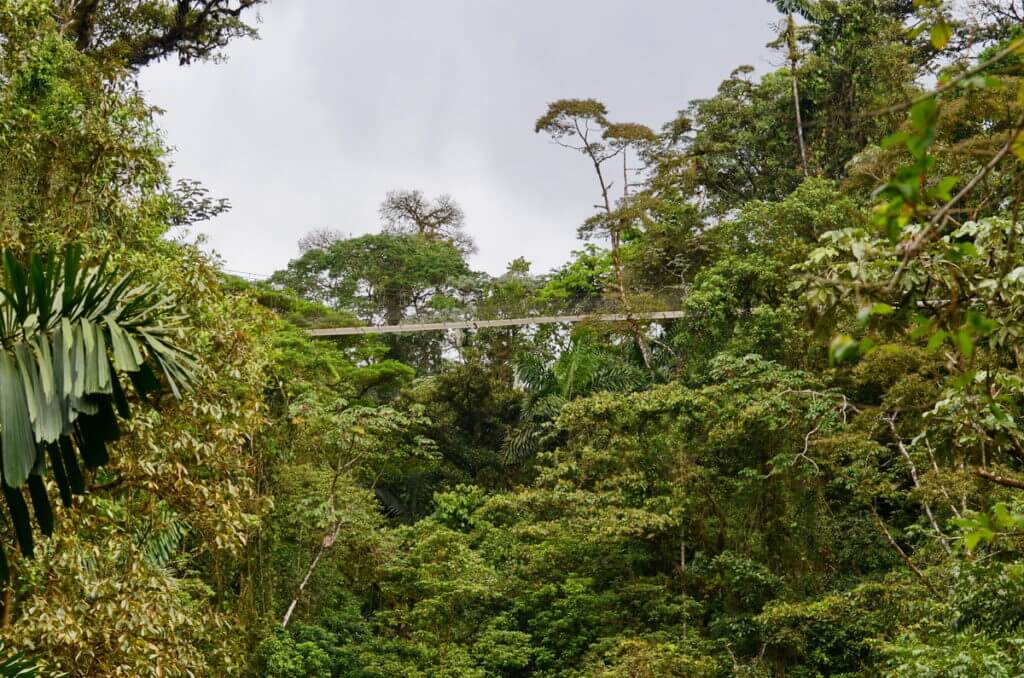A Bird’s Eye View At Mistico Arenal Hanging Bridges
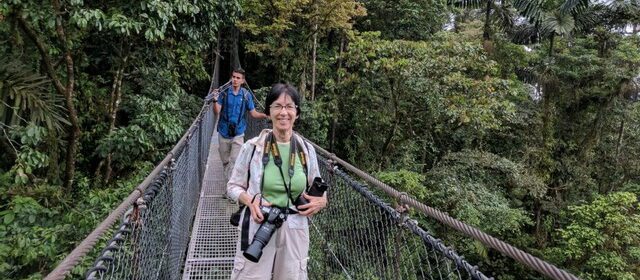
Bob and I wasted no time when in Costa Rica. For the morning of our second day, we had booked a guided bird tour at Mistico Arenal Hanging Bridges Park. At 5:30 a.m., a bus picked us up at Hotel Kokoro, and as it navigated the steep, sinuous road to the pavilion, the sun was just beginning to wedge its way between the deep shadows of the mountains and the dark night sky.
The drive was about 30 minutes, and upon arrival at the pavilion, everyone piled out of the bus, stretched their legs and took a glance at the view from the parking lot. Not much could be seen at that time of the morning.
Even as Marvin, our guide, gave a brief introduction, the sun was making inroads into the early morning gloom. Bob and I were paired with one other couple, and together, the 5 of us spent several hours exploring.
Right there, at the edge of the parking lot, Marvin pointed out a Crimson-collared Tanager.
Perched high in one of the large trees, it was difficult to miss the striking red pattern of its plumage even though the distance defied a good photo.
Competing for attention in a neighbouring tree was a Black-cowled Oriole. Bob and I felt that we were off to a good start.
We had arrived at Mistico Arenal Hanging Bridges Park before it opened, but licensed tour guides have permission to enter the grounds early. Preferring to explore some of the non-public areas, Marvin led us along a gravel road.
The air was filled with the chatter of countless birds, but it was a Yellow-throated Toucan that grabbed my attention when it flew and landed in a nearby tree. I was surprised to see that it had blue feet.
Our guide did not rush us, and often I found myself lagging behind the rest of the group. It was an advantage being off the beaten path, which in this case slowly climbed upwards.
Frequents stops were made to search the bushes, trees and sky for wildlife. Through a break in the trees, we had a marvelous view of distant Lake Arenal and the Cordillera de Tilarán (Tilarán Mountain Range).
Lake Arenal is a massive lake at 85 square kilometres in size. It is the largest lake in Costa Rica, but it wasn’t always that big. The lake tripled in size when the Arenal Dam was constructed in 1979.
Skirting the edge of the rainforest was the place to be as the sun grew in strength. Had we been on the trails deep in the jungle, darkness would have prevailed. With the birds coming to life at the break of day, there were many to see and hear. Our guide was able to identify many of the birds by their calls, and he was proficient at imitating a good number of them.
Because of the elevation, a good share of the time we were looking out over the treetops. As we lingered at one viewing point, in the near distance, our guide spotted a bird that had him becoming quite animated.
It took we four novices quite some time to locate it in the thick foliage, but finally we locked our eyes on a Long-tailed Tyrant. This unique flycatcher was very challenging to photograph because of its habit of darting out from the treetop to catch flying insects. The males have very long central tail feathers, and yet the species nests in tree cavities.
One of the species that we hoped to see in Costa Rica was a Keel-billed Toucan, so when one glided into view, I jumped for joy.
The Keel-billed Toucan seemed restless and moved from one perch to another. As our group moved along the trail, we saw it several times and were glad that it found some sunlight that illuminated its colourful features.
As Bob and I looked on, the Keel-billed Toucan assumed different postures on top of this one snag. When the breeze ruffled its feathers, the red ones on its rump reminded me of a powder puff. Talk about a showy bird!
Eventually, we found ourselves within the public areas of Mistico Arenal Hanging Bridges Park. The Park includes a number of hanging bridges that are part of a 3-kilometre long interpretive trail.
We saw the most interesting specimens of flora such as this seed casing that has split open so a new plant can grow. Already it has set down a root.
Mistico Arenal Hanging Bridges Park is at an elevation where the highland and lowland forests meet. The highly diverse forest has an integration of species from both ecosystems.
In total, there are 15 bridges at Mistico Arenal Hanging Bridges Park, six of which are hanging bridges.
Bob and I were glad we have sea legs because crossing a hanging bridge is not easy. The bridge tilts and sways, undulating like a boat on the waves.
There is something special about being able to look down on the forest canopy. For one thing, the variety of flora, plant structures and symbiotic relationships can be observed and appreciated from this bird’s eye view.
The rainforest is filled with epiphytic plants that grow on the surface of other plants such as this broad-leaved bromeliad. The bromeliad gains its nutrients from the air, rain and any debris that accumulates between its leaves and the trunk of the tree. Here, we see a Golden-hooded Tanager and a Green Honeycreeper sharing the same perch.
As we navigated the network of bridges and walkways, we were fortunate to find few people disturbing the solitude. Working our way from the furthest reaches of the trail system toward the entrance gate helped to ensure our privileged situation.
To illustrate the challenges we faced with regards to locating birds and managing lighting issues in the dimly-lit rainforest, here is a photograph I took of a Wedge-billed Woodcreeper on a tree beside the walkway.
The Wood-creeper remained almost invisible to the naked eye as it foraged for insects in the moss growing on the tree bark. The bird was able to hide in plain sight by keeping to the shadows and using the colour of its plumage. We would have missed noticing this bird only for our guide pointing it out.
With lighting and exposure modified on this and the previous photo, the Wedge-billed Woodcreeper becomes visible.
This appendage growing from another tree close-by certainly had us doing a double take. At first, I thought it was another Woodcreeper.
Bob and I were in seventh heaven there in the treetops. The temperature had warmed up from the 20-Celsius chill at dawn, and the tropical sun was warm on our backs when we stepped from the dense shade of the rainforest onto the hanging bridges.
Some of the plants were so close that I could almost reach out and touch them. With such vibrant buds and fruits, this plant intrigued me but I have no idea what it is.
There is so much to see when walking the hiking trails in the rainforest. We were keeping our eyes open for poisonous Eyelash Vipers twined around twigs, amphibians scurrying in the leaf matter, unusual plants, and of course birds. Sitting unobtrusively on a low, horizontal branch was a Broad-billed Motmot. Blending in with the tangle of vegetation, it is a wonder we noticed it at all.
This was the first Motmot we had ever seen, and we were blown away by the colour of its plumage and the unique tail racquets at the end of its tail. Two diagnostic traits of this species are the blue-green chin “whiskers” and the large, central chest spot. This was one handsome bird!
As we neared the Pavilion at the entrance to the Park, we were afforded a look back at one of the hanging bridges over which we had just walked. It seemed inconceivable that we had been up that high walking in the air.
Before boarding the bus to return to Hotel Kokoro, we had the opportunity to observe and photograph an accommodating Great Kiskadee…
and a Social Flycatcher, both common birds seen everywhere, but it was nice to find them perched so nicely. In total, we saw 43 species of birds, and as an added bonus, we were able to catch the tail end of the breakfast buffet back at our hotel while making plans for the remainder of the day.
Frame To Frame – Bob and Jean


